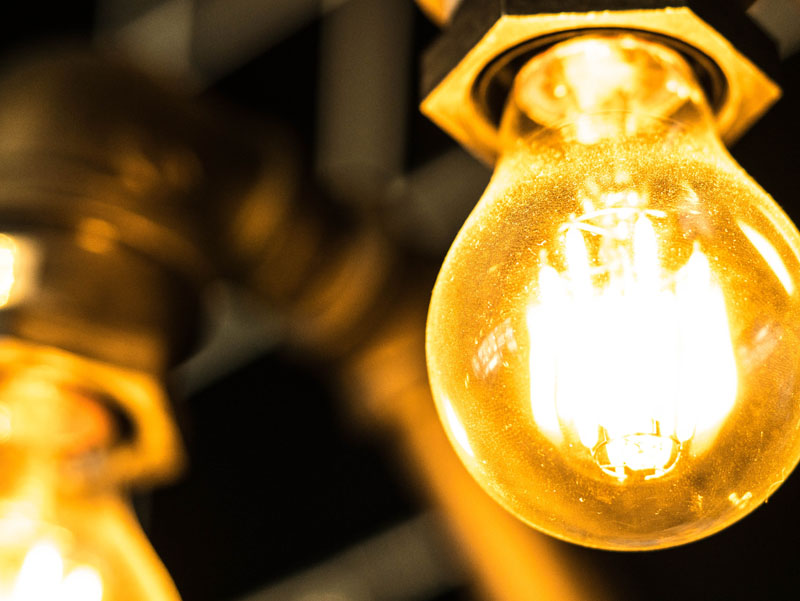Aperture size, represented by the f-stop value, is a key factor in photography that determines the amount of light that enters the camera through the lens. It also plays a significant role in the resulting image’s Depth of Field, or the range of sharp focus in a photograph.
But how does Aperture size affect image quality?
In this article, we will explore Aperture size and its effects on image quality, Aperture size and Depth of Field, Aperture size and low light photography, Aperture size and lens sharpness, Aperture size and bokeh, Pros and cons of using different Aperture sizes, Examples of Aperture size in action and the most Frequently asked questions about Aperture size and image quality
Introduction to Aperture size and its effects on image quality
Aperture size refers to the diameter of the lens opening, which controls the amount of light that enters the camera. It is measured in f-stops, with a smaller f-stop number indicating a larger Aperture size and vice versa.
For example, an f-stop of f/2.8 corresponds to a larger Aperture size than an f-stop of f/8.
Aperture size has a direct impact on the overall exposure of a photograph, with a larger Aperture size allowing more light to enter the camera and resulting in a brighter image, while a smaller Aperture size allows less light and produces a darker image.
However, Aperture size also affects other aspects of image quality, such as Depth of Field, low light performance, lens sharpness, and bokeh.
Aperture size and Depth of Field
One of the most noticeable effects of Aperture size on image quality is the amount of the photograph that appears to be in sharp focus. This is known as the Depth of Field. A larger Aperture size, indicated by a smaller f-stop value, results in a shallower Depth of Field, with only a narrow range of the photograph appearing sharp. This is useful for isolating a subject in the foreground or background and creating a sense of separation between the subject and the background.
On the other hand, a smaller Aperture size, indicated by a larger f-stop value, results in a deeper Depth of Field, with a wider range of the photograph appearing sharp. This is useful for landscapes or group shots where you want as much of the photograph as possible to be in focus.
Aperture size and low light photography
Another important effect of Aperture size on image quality is the ability to capture photographs in low light situations. A larger Aperture size allows more light to enter the camera, making it easier to take clear and well-exposed photographs in dimly lit environments. This is especially useful for events such as concerts or indoor sports where the lighting may be poor.
On the other hand, using a smaller Aperture size in low light situations can result in photographs that are too dark or noisy due to the limited amount of light entering the camera. It is important to consider the Aperture size when shooting in low light to ensure that the resulting image is of high quality.
Aperture size and lens sharpness
Another factor to consider is that different Aperture sizes can affect the overall sharpness of the photograph. While a larger Aperture size can produce a shallow Depth of Field and isolate the subject, it can also result in softer images due to the shallow Depth of Field and the effect of lens aberrations. Lens aberrations are distortions in the image caused by the way the lens refracts light, and they can be more pronounced at larger Aperture sizes.
On the other hand, a smaller Aperture size can result in a deeper Depth of Field and a greater range of the photograph appearing sharp, but it can also have negative effects on lens sharpness. Using a very small Aperture size, such as f/16 or f/22, can result in a phenomenon known as diffraction, which causes the light passing through the small Aperture to spread out and result in a softer image.
It is important to find a balance between Aperture size and lens sharpness, and this will depend on the specific lens and the desired effect. In general, lenses tend to be sharper at medium Aperture sizes, such as f/8 or f/11, but it is always a good idea to test out different Aperture sizes to see how they affect the sharpness of the image.
Aperture size and bokeh
Bokeh refers to the aesthetic quality of the out-of-focus areas in a photograph, and it is often used to draw attention to the subject by blurring the background. A larger Aperture size produces a shallower Depth of Field and can result in a more pronounced bokeh effect, with the background appearing more blurred and dreamy.
On the other hand, a smaller Aperture size produces a deeper Depth of Field and can result in less bokeh, with the background appearing more in focus. It is important to consider the desired bokeh effect when choosing the Aperture size, as it can significantly impact the overall aesthetic of the photograph.
Pros and cons of using different Aperture sizes:
Each Aperture size has its own advantages and disadvantages, and the best choice will depend on the specific situation and the desired effect.
Larger Aperture sizes (smaller f-stop values) have the following pros:
- Allow more light to enter the camera, making them useful for low light photography
- Produce a shallow Depth of Field, which is useful for isolating the subject and creating a sense of separation
- Can produce a pronounced bokeh effect, which can be aesthetically pleasing and draw attention to the subject
Larger Aperture sizes also have the following cons:
- Can result in softer images due to lens aberrations and the shallow Depth of Field
- May not be suitable for situations where a deep Depth of Field is desired, such as group shots or landscapes
Smaller Aperture sizes (larger f-stop values) have the following pros:
- Produce a deeper Depth of Field, which is useful for situations where a wide range of the photograph should be in focus
- Can result in sharper images due to the deeper Depth of Field and the reduced effect of diffraction
Smaller Aperture sizes also have the following cons:
- Allow less light to enter the camera, which can make them less suitable for low light photography
- Produce less bokeh, which may not be desirable in certain situations
Examples of Aperture size in action:
Here are a few examples of how Aperture size can affect the image quality of a photograph:
Portrait with shallow Depth of Field
In this portrait, the Aperture size was set to f/2.8, which resulted in a shallow Depth of Field and a pronounced bokeh effect.
The subject is isolated and appears sharp, while the background is blurred and serves as a subtle backdrop.
This helps to draw attention to the subject and create a sense of separation.
Landscape with deep Depth of Field
In this landscape photograph, the Aperture size was set to f/11, which resulted in a deeper Depth of Field and a sharp image overall. The entire scene is in focus, from the foreground to the background, which is important for capturing the expansive view.
A smaller Aperture size may have produced too much bokeh and disrupted the sense of depth in the photograph.
Low light photography
In this photograph taken at a concert, the Aperture size was set to f/2.8 to allow more light to enter the camera and capture a clear and well-exposed image.
A smaller Aperture size may have resulted in a darker and potentially noisy photograph due to the low light conditions.
Aperture size and image quality FAQ
Here are some of the most Frequently asked questions about Aperture size and image quality:
How do I know which Aperture size to use?
The best Aperture size to use will depend on the specific situation and the desired effect.
For portraits, a larger Aperture size such as f/2.8 or f/4 can produce a shallow Depth of Field and isolate the subject.
For landscapes, a smaller Aperture size such as f/11 or f/16 can produce a deeper Depth of Field and keep the entire scene in focus. In low light situations, a larger Aperture size such as f/2.8 can allow more light to enter the camera and improve the overall exposure.
It is always a good idea to experiment with different Aperture sizes to see how they affect the image.
Is a larger or smaller Aperture size better?
There is no one-size-fits-all answer to this question, as the best Aperture size will depend on the specific situation and the desired effect. A larger Aperture size can be useful for low light photography and creating a shallow Depth of Field, while a smaller Aperture size can be useful for landscapes and producing a deep Depth of Field.
It is important to consider the specific needs of the photograph and choose the Aperture size accordingly.
Does Aperture size affect lens sharpness?
Aperture size can affect lens sharpness, with larger Aperture sizes potentially resulting in softer images due to lens aberrations and a shallow Depth of Field, and smaller Aperture sizes potentially resulting in softer images due to diffraction.
It is important to find a balance between Aperture size and lens sharpness, and this will depend on the specific lens and the desired effect.
Conclusion
In conclusion, Aperture size is a key factor in photography that determines the amount of light entering the camera and has a significant impact on image quality. It affects the Depth of Field, low light performance, lens sharpness, and bokeh of a photograph.
It is important to consider the specific needs of the photograph and choose the Aperture size accordingly to achieve the desired effect.


